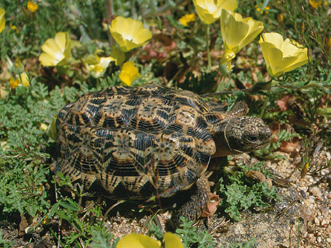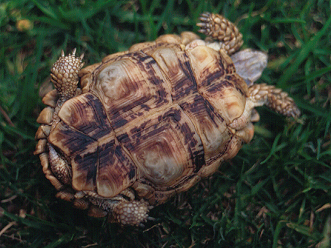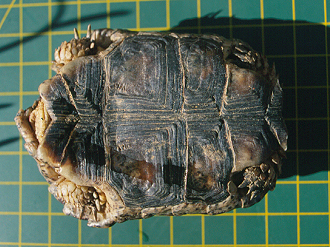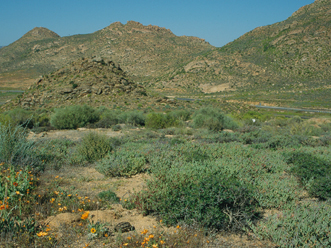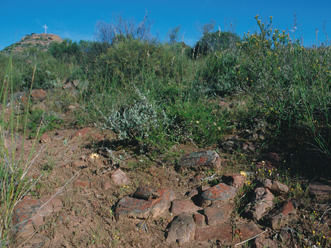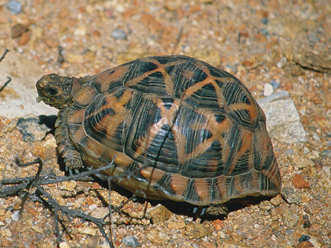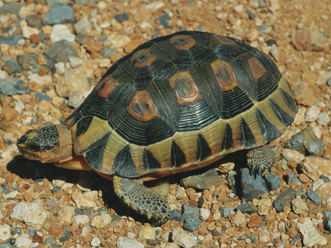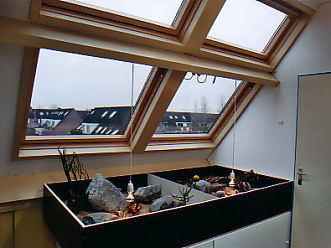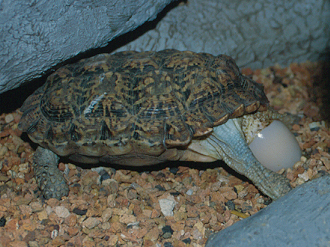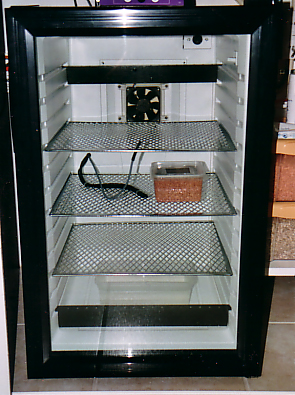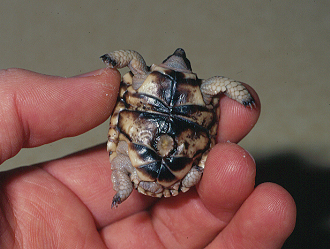
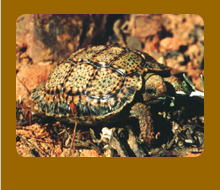 |
|
Chersobius signatus Description This is the world's smallest tortoise, growing to a maximum straight carapace length of 11 cm. Buttock tubercles are present, and males have concave plastrons. Females have shells that are higher and wider than shells of males (after correcting for shell length), presumably to accommodate the large eggs. Moreover, gravid females can temporarily expand their shell when they are gravid. Although no subspecies are currently recognised there are morphological differences between populations. Northern individuals are distinguished from southern individuals by their serrated posterior marginals and pronounced sulcate carapace (i.e., deep narrow grooves between the scutes) with sunken areolae. The carapace of northern individuals has an overall dark appearance and a light-brown background colour. The carapace has large, dark speckles, and sometimes rays of background colour. In contrast, the carapace background of southern individuals is orange-red or salmon-pink, with a pattern of finer dark stipples and short, thin black rays. Northern population males and females have a different colouration of the carapace. Female carapaces are darker with more rays, compared to males, and male carapaces have more speckles.
In the wild Chersobius signatus occurs in the semi-arid Northern and Western Cape (South Africa), roughly stretching from the Orange River in the north to Piketberg in the south and from the Atlantic coast in the west to Calvinia in the east. The entire range receives winter rainfall, roughly between March and August. Tortoises are confined to rocky terrain, where they hide in or near rock crevices. The main activity season of northern individuals is spring, when males and females sometimes share retreats, and mating takes place. In this season, tortoises have a unimodal activity pattern. The spring season has cold and overcast episodes with drizzle that can last 1-3 days. Night frosts occur as well. Nevertheless, the tortoises maintain high body temperatures by spending most of their active time basking. The body condition and growth of the northern population is strongly influenced by the amount of rainfall and timing of rain. These relationships probably manifest through variation in primary production. The most important food items were Oxalis spp., Leysera tenella, and Crassula thunbergiana minutiflora. In spring, female C. signatus produce several single-egg clutches that they burry in shallow nests under shrubs or overhanging rocks. Temperatures in a nest during the first months of incubation can be found here.
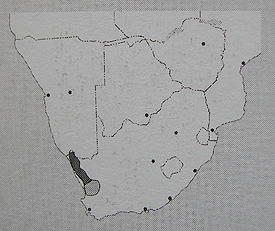 Distribution range of northern and southern Chersobius signatus (from Branch 1998). There is extensive experience keeping and breeding northern C. signatus in captivity, and there are no reasons to suspect that the northern and southern populations differ greatly in their requirements. For this species, a caresheet is available. Further details on husbandry can be found in the annual reports of Dwarf Tortoise Conservation. Most, if not all, northern C. signatus that were imported into the EU legally, and their offspring, are registered in a studbook. This website provides an up to date overview of the studbook population.
|
